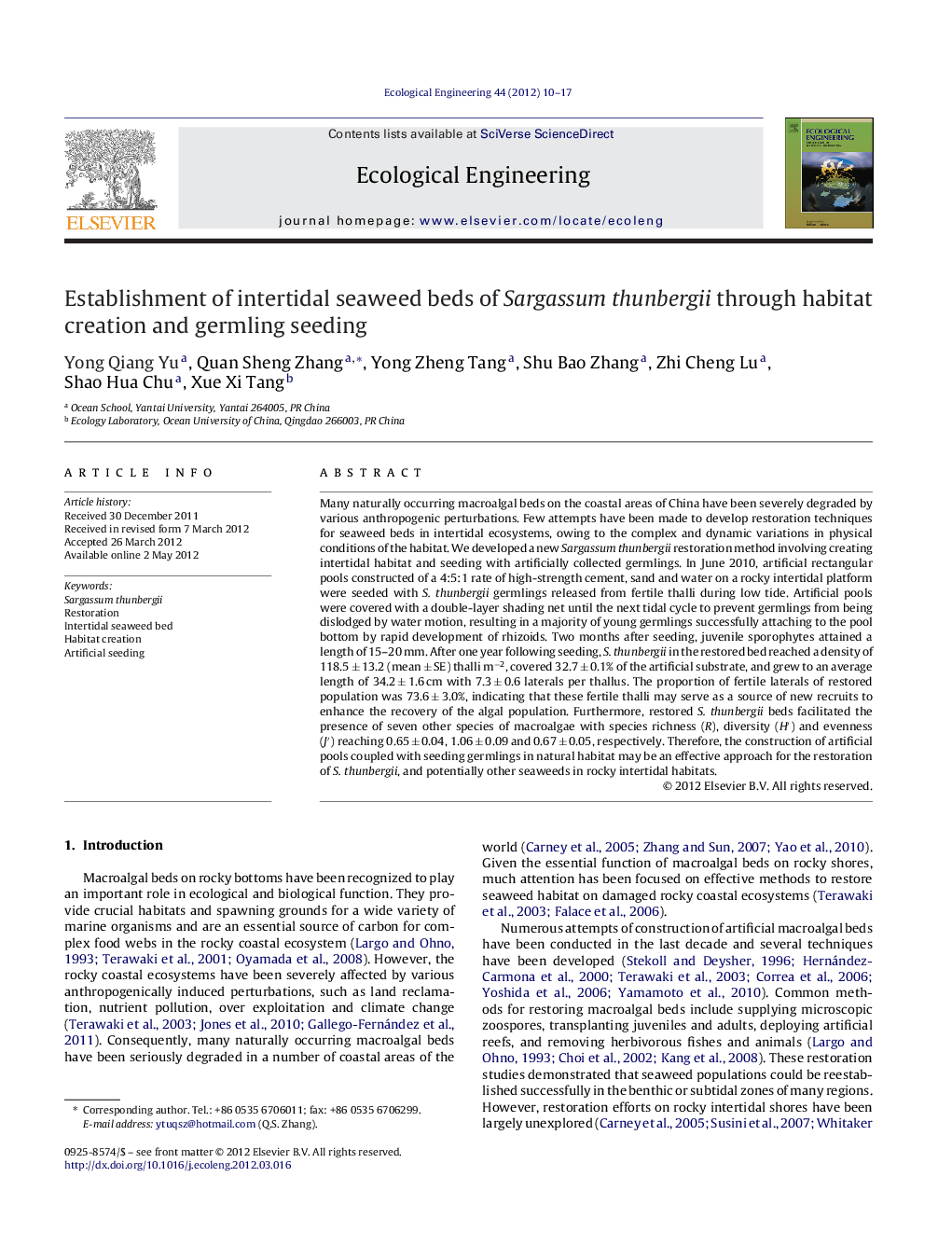| Article ID | Journal | Published Year | Pages | File Type |
|---|---|---|---|---|
| 6302651 | Ecological Engineering | 2012 | 8 Pages |
Abstract
Many naturally occurring macroalgal beds on the coastal areas of China have been severely degraded by various anthropogenic perturbations. Few attempts have been made to develop restoration techniques for seaweed beds in intertidal ecosystems, owing to the complex and dynamic variations in physical conditions of the habitat. We developed a new Sargassum thunbergii restoration method involving creating intertidal habitat and seeding with artificially collected germlings. In June 2010, artificial rectangular pools constructed of a 4:5:1 rate of high-strength cement, sand and water on a rocky intertidal platform were seeded with S. thunbergii germlings released from fertile thalli during low tide. Artificial pools were covered with a double-layer shading net until the next tidal cycle to prevent germlings from being dislodged by water motion, resulting in a majority of young germlings successfully attaching to the pool bottom by rapid development of rhizoids. Two months after seeding, juvenile sporophytes attained a length of 15-20 mm. After one year following seeding, S. thunbergii in the restored bed reached a density of 118.5 ± 13.2 (mean ± SE) thalli mâ2, covered 32.7 ± 0.1% of the artificial substrate, and grew to an average length of 34.2 ± 1.6 cm with 7.3 ± 0.6 laterals per thallus. The proportion of fertile laterals of restored population was 73.6 ± 3.0%, indicating that these fertile thalli may serve as a source of new recruits to enhance the recovery of the algal population. Furthermore, restored S. thunbergii beds facilitated the presence of seven other species of macroalgae with species richness (R), diversity (Hâ²) and evenness (Jâ²) reaching 0.65 ± 0.04, 1.06 ± 0.09 and 0.67 ± 0.05, respectively. Therefore, the construction of artificial pools coupled with seeding germlings in natural habitat may be an effective approach for the restoration of S. thunbergii, and potentially other seaweeds in rocky intertidal habitats.
Related Topics
Life Sciences
Agricultural and Biological Sciences
Ecology, Evolution, Behavior and Systematics
Authors
Yong Qiang Yu, Quan Sheng Zhang, Yong Zheng Tang, Shu Bao Zhang, Zhi Cheng Lu, Shao Hua Chu, Xue Xi Tang,
